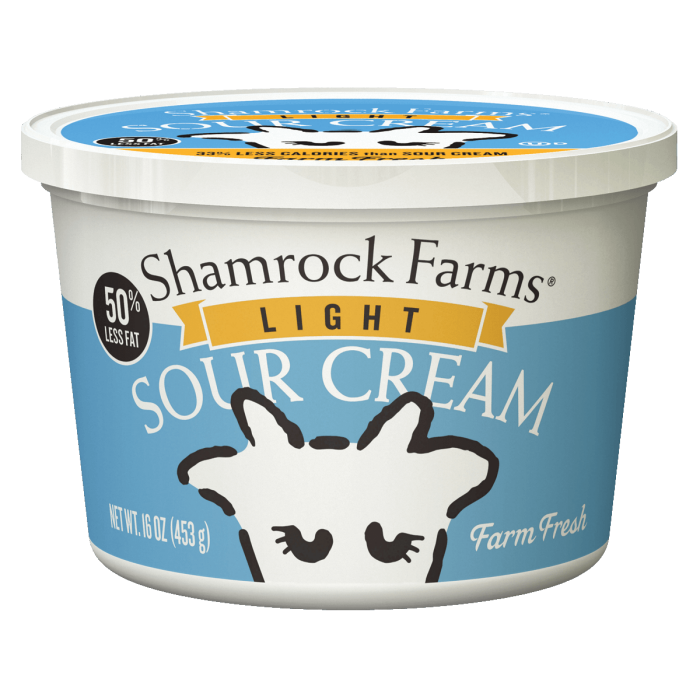
Sour Cream: The Unsung Hero of the Culinary World
Ah, sour cream. A humble, yet versatile ingredient that has graced many a dish with its tangy, creamy goodness. Often overlooked and sometimes even forgotten, sour cream is the unsung hero of the culinary world. But fear not, dear students, for today we shall delve into the wonderful world of this dairy delight and give it the recognition it so rightly deserves.
A Brief History of Sour Cream
Before we dive into the nitty-gritty of what makes sour cream so fantastic, let's take a quick trip down memory lane to discover its origins. Though the exact origin of sour cream is unknown, it's believed to have been around for thousands of years. It was likely discovered by accident when fresh cream was left out and exposed to the natural lactic acid bacteria in the air, causing it to ferment and thicken.
Sour cream has been a staple in Eastern European cuisine for centuries, and it eventually made its way to the United States by way of European immigrants. Today, sour cream is a popular ingredient in many dishes, from Mexican-inspired fare to classic American comfort food.
The Science of Sour Cream
What is Sour Cream, Anyway?
So, what exactly is sour cream? Simply put, it's a dairy product made by fermenting regular cream with certain types of lactic acid bacteria. The bacterial culture, which is introduced either deliberately or naturally, sours and thickens the cream.
Sour cream typically contains around 18-20% milkfat, making it a rich and creamy addition to various dishes. The acidity of sour cream not only provides its signature tangy flavor but also acts as a natural preservative, giving it a longer shelf life than fresh cream.
The Fermentation Process
The fermentation process is what gives sour cream its distinct taste and texture. Lactic acid bacteria are responsible for this transformation, converting lactose (the sugar found in milk) into lactic acid. This increase in acidity causes the proteins in the cream to denature, or unravel, and then reassemble into a new structure, resulting in a thicker, creamier consistency.
This process is similar to that of yogurt, another fermented dairy product. However, sour cream has a higher fat content and a milder flavor than yogurt, making it a more indulgent option for many recipes.
Uses for Sour Cream in the Kitchen
Now that we've covered the basics of what sour cream is and how it's made, let's explore some of its many uses in the kitchen.
A Creamy Addition to Sauces and Soups
Sour cream is an excellent addition to sauces and soups, adding a velvety texture and a subtle tanginess that can elevate a dish to new heights. When adding sour cream to hot liquids, be sure to temper it first by whisking in a small amount of the hot liquid before adding the mixture back into the pot. This will help prevent the sour cream from curdling and ensure a smooth, creamy result.
A Cool and Tangy Topping
One of the most common uses for sour cream is as a topping for various dishes, such as baked potatoes, tacos, and chili. Its cool, tangy flavor provides the perfect contrast to rich, spicy, or heavy foods, making it a welcome addition to many meals.
A Secret Ingredient in Baked Goods
Did you know that sour cream can also be used in baked goods? That's right! Its high-fat content and acidity can help create tender, moist, and flavorful cakes, muffins, and other treats. The acidity of sour cream also reacts with baking soda, producing carbon dioxide, which helps to leaven and lighten the texture of your baked goods.
A Base for Dips and Salad Dressings
Sour cream's thick, creamy texture makes it an ideal base for dips and salad dressings. Combine it with herbs, spices, and other ingredients to create a flavorful and satisfying accompaniment to your favorite chips, veggies, or salads.
A Note on Substitutions
While sour cream is a versatile and delicious ingredient, there may be times when you need to substitute it in a recipe due to dietary restrictions or simply because you've run out. Here are a few alternatives that can be used in place of sour cream:
- Greek yogurt: This thick, strained yogurt has a similar consistency and tanginess to sour cream, making it a suitable substitute in many recipes. Opt for full-fat Greek yogurt for the best results.
- Crème fraîche: This French cousin of sour cream has a higher fat content and a milder flavor, making it an excellent option for sauces and soups. However, it can be more expensive and harder to find than sour cream.
- Buttermilk or milk mixed with lemon juice or vinegar: While not as thick and creamy as sour cream, these options can provide a similar tangy flavor in recipes where the texture is not as crucial.
Its rich, tangy flavor and creamy texture can enhance a wide variety of dishes, from savory sauces to sweet baked goods. So next time you're whipping up a culinary masterpiece, don't forget to pay homage to the unsung hero of the culinary world: sour cream.